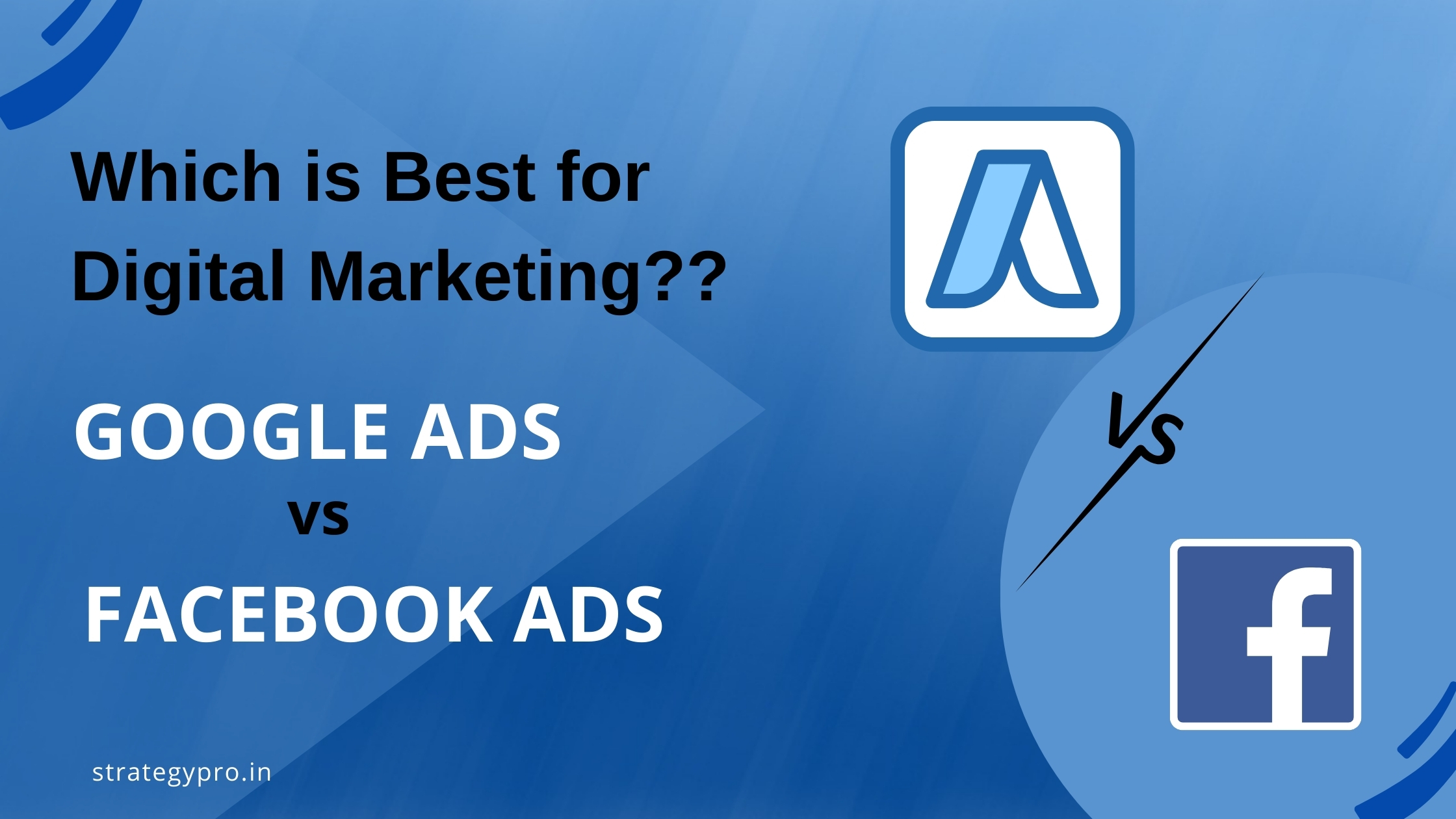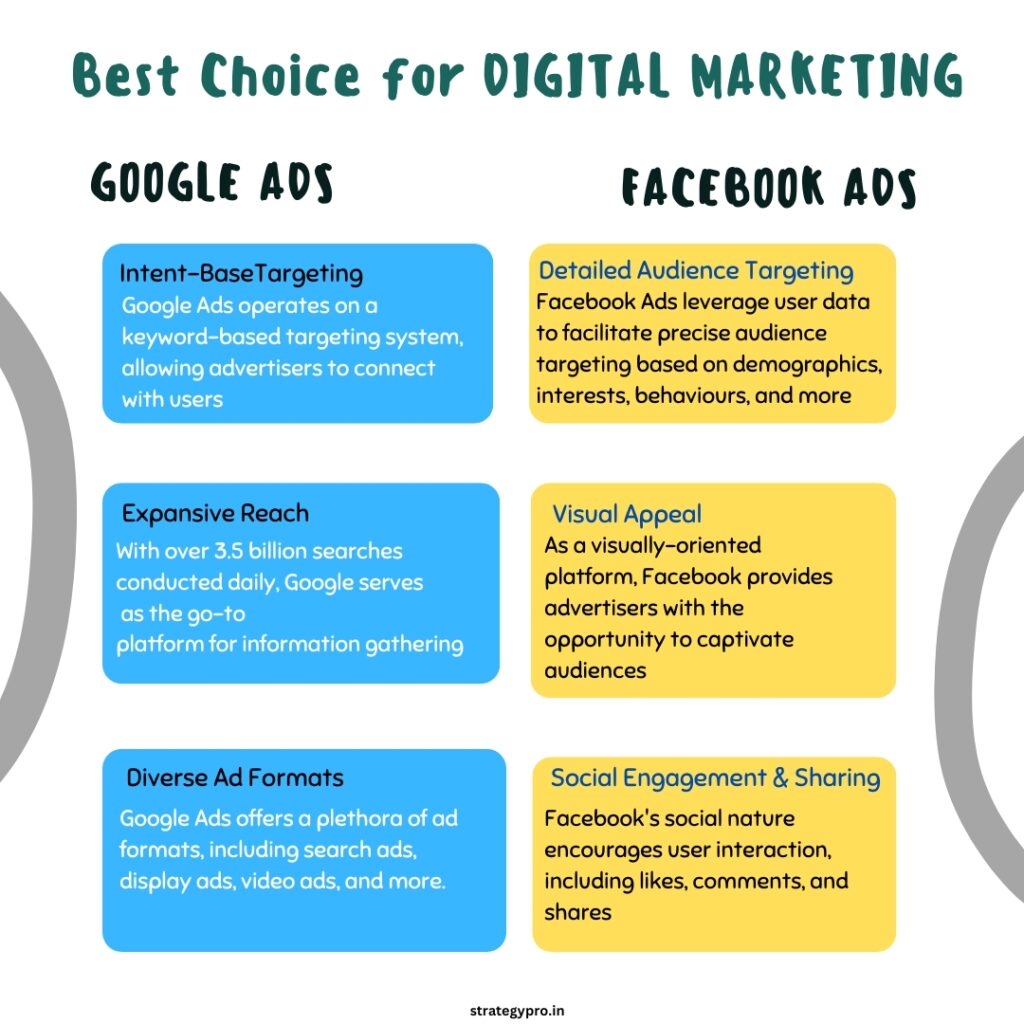
Google Ads vs. Facebook Ads: Which is Best for Digital Marketing
- By admin
In the digital marketing realm, Google Ads and Facebook Ads stand as titans, each offering unique advantages and catering to diverse advertising objectives. Understanding the differences between these platforms is crucial for businesses seeking to optimize their marketing strategies. Let’s delve into the intricacies of Google Ads and Facebook Ads to determine which platform might be the better fit for your digital marketing endeavours.
Google Ads
Intent-Based Targeting:
Google Ads operates on a keyword-based targeting system, allowing advertisers to connect with users actively searching for specific products or services. This intent-based targeting ensures that ads are displayed to users already expressing interest, potentially leading to higher conversion rates.
Expansive Reach:
With over 3.5 billion searches conducted daily, Google serves as the go-to platform for information gathering. This extensive reach enables advertisers to tap into a vast audience pool across various demographics and geographic locations.
Diverse Ad Formats:
Google Ads offers a plethora of ad formats, including search ads, display ads, video ads, and more. This versatility allows advertisers to tailor their campaigns to suit different marketing objectives and engage users across multiple touchpoints.

Facebook Ads
Detailed Audience Targeting:
Facebook Ads leverage user data to facilitate precise audience targeting based on demographics, interests, behaviours, and more. This granular targeting capability enables advertisers to reach highly specific audience segments, fostering better engagement and conversion opportunities.
Visual Appeal:
As a visually-oriented platform, Facebook provides advertisers with the opportunity to captivate audiences through visually compelling ad formats, such as image ads, carousel ads, and video ads. These visually appealing formats can significantly enhance ad performance and drive higher engagement rates.
Social Engagement and Sharing:
Facebook’s social nature encourages user interaction, including likes, comments, and shares. Leveraging this social engagement aspect can amplify the reach of ads organically, as users interact with and share content within their networks, fostering brand advocacy and awareness.
Choosing the Right Platform:
While both Google Ads and Facebook Ads offer distinct advantages, selecting the most suitable platform depends on various factors, including your marketing objectives, target audience, budget, and industry niche.
Consideration Stage:
For businesses targeting users at the consideration stage of the purchasing funnel, where users are actively researching products or services, Google Ads’ intent-based targeting proves invaluable.
Brand Awareness and Engagement:
Conversely, if your goal revolves around building brand awareness or fostering social engagement, Facebook Ads’ detailed audience targeting and visually captivating formats offer a compelling solution.
Budget Allocation:
Evaluate your budget allocation strategy, as the cost-per-click (CPC) and cost-per-impression (CPM) can vary between Google Ads and Facebook Ads. Conduct thorough cost-benefit analyses to determine the platform offering the best return on investment (ROI) for your advertising budget.
In conclusion, both Google Ads and Facebook Ads are indispensable components of a robust digital marketing strategy. By mastering the intricacies of each platform and tailoring them to your unique marketing goals, you can harness their capabilities to amplify your brand’s visibility, engagement, and conversion rates in today’s dynamic digital arena. Ready to elevate your marketing game? Partner with StrategyPro and unlock the full potential of Google Ads and Facebook Ads for your business success. Let’s strategize together and propel your brand to new heights!
